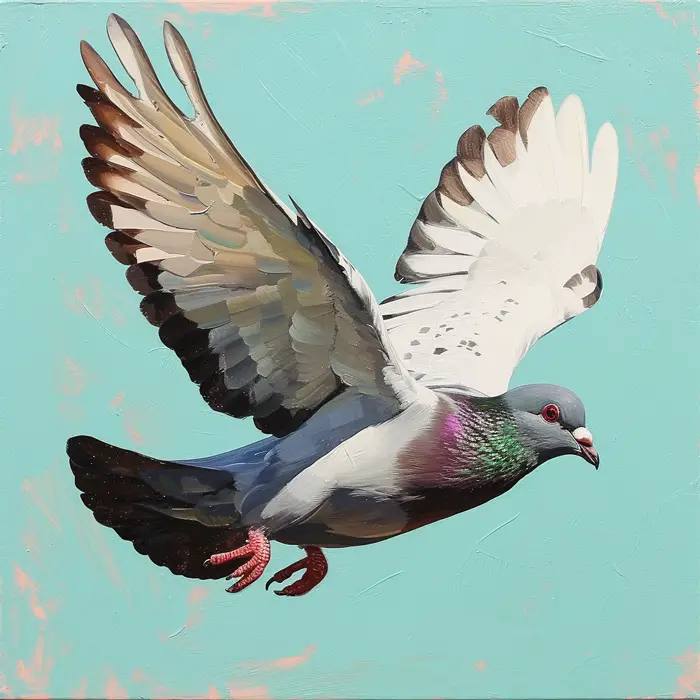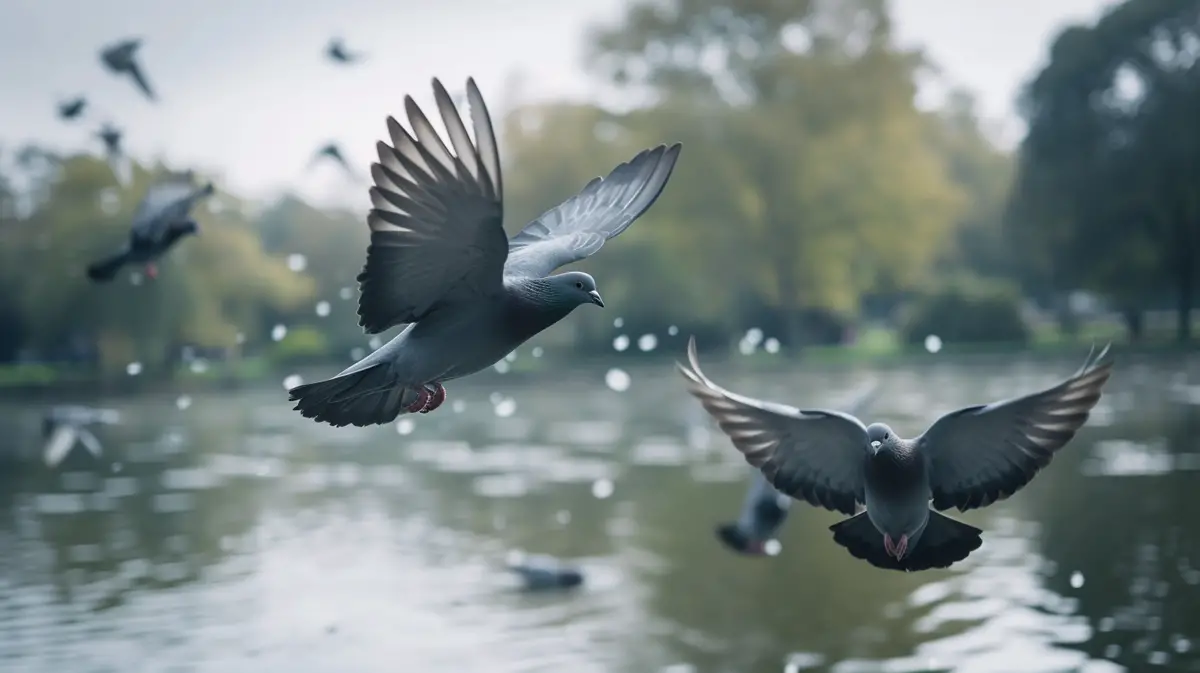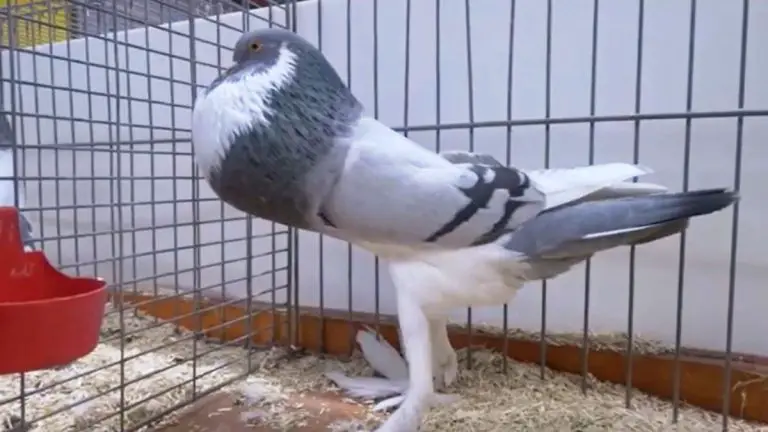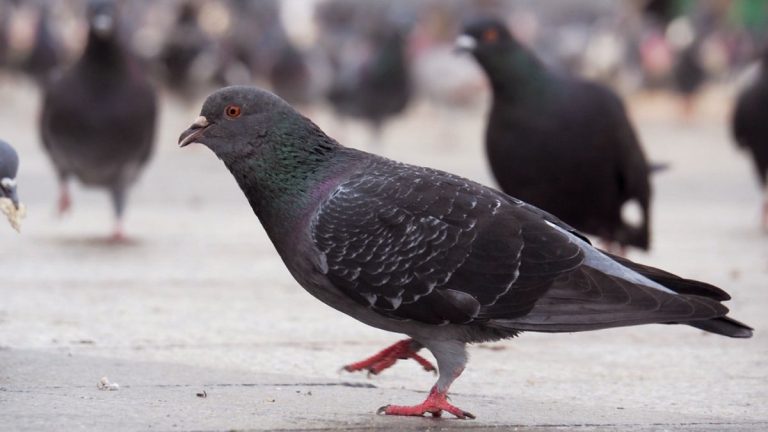Pigeon Feather Anatomy: A Detailed Explanation
Have you ever wondered about the intricate beauty of a pigeon feather? As an avid bird enthusiast, I have always been captivated by the mesmerizing patterns and delicate structure of these feathers. In this article, I’ll delve into the fascinating world of pigeon feathers, exploring their unique characteristics and the important role they play in the lives of these remarkable birds. From their remarkable coloration to their aerodynamic design, pigeon feathers are truly a marvel of nature. Join me as we unravel the secrets hidden within each feather and gain a deeper appreciation for these incredible creatures.
The Importance of Pigeon Feathers
As an avid observer of nature, I am constantly amazed by the wonders that exist right before our eyes. One such marvel that often goes unnoticed is the incredible importance of pigeon feathers. These seemingly ordinary features of pigeons hold a wealth of significance and play a vital role in their daily lives. Let’s explore the fascinating world of pigeon feathers and uncover their true value.

1. Insulation and Protection:
Pigeon feathers are not just for show. They serve as an effective insulation system, keeping these birds warm in cold weather and protecting them from heat in scorching temperatures. The intricate structure of the feathers enables pigeons to regulate their body temperature and stay comfortable in varying climates.
2. Flight and Navigation:
Feathers are essential for pigeons to take flight and navigate through their surroundings. Each feather is meticulously designed with lightweight barbs, providing the perfect balance between strength and flexibility. These aerodynamically crafted feathers allow pigeons to soar through the skies with precision and in search of food, water, and shelter.
3. Courtship and Mating:
Pigeon feathers also play a critical role in courtship and mating rituals. Male pigeons showcase their exquisite plumage to impress potential mates, demonstrating their strength and vitality. These vibrant feathers, adorned with striking colors and patterns, are a captivating sight and serve as a visual representation of a pigeon’s health and genetic fitness.
4. Communication and Recognition:
Feathers are not just a means of adornment; they also contribute to communication and recognition within the pigeon community. Pigeons use subtle movements and displays of their feathers as a form of non-verbal communication with their flock members. They can convey a range of messages, including warnings, territorial boundaries, and even affection.
5. Environmental Indicators:
Believe it or not, pigeon feathers can provide valuable insights into the environment in which these birds reside. Scientists can study the composition of feathers to determine the presence of pollutants, heavy metals, and other environmental contaminants. By analyzing pigeon feathers, we can gain a deeper understanding of the impact of our actions on the world around us.
Anatomy and Structure of Pigeon Feathers
Feathers play a crucial role in the life of a pigeon. They serve various functions that contribute to their survival and well-being. Let me break down the anatomy and structure of pigeon feathers for you.

Shaft and Vane
At the center of each feather is a strong and flexible central shaft. This shaft runs along the length of the feather and provides stability. The shaft splits into two sections known as the vane. The vane is made up of numerous interlocking barbs that give the feather its flat and wide shape.
Barbs and Barbules
The barbs themselves are composed of even smaller structures called barbules. These tiny branches extend from the sides of the barbs, creating a network of interlocking hooks. These hooks keep the barbs connected, ensuring that the feather remains intact and maintains its shape during flight or preening.
Down Feathers
Not all feathers are the same. Pigeons also have fluffy down feathers near their bodies. These down feathers lack the barbules, making them soft and providing excellent insulation. They help keep the pigeon warm in cold weather by trapping air close to their bodies, acting as a cozy blanket.
Pigment and Patterns
Pigeon feathers come in a wide range of colors and patterns. The color of a feather is determined by the presence of pigments. Some feathers have pigments that create stunning patterns, while others are plain or exhibit iridescence. These patterns can serve as a form of camouflage or be used for display during courtship rituals.
Replacement and Maintenance
Feathers are not permanent. Pigeons undergo a molting period during which they shed and replace their feathers. This process ensures that their feathers stay in top condition for efficient flight and protection. Pigeons meticulously groom their feathers by preening, using their beaks to align and clean the barbs and barbules.
Understanding the anatomy and structure of pigeon feathers helps us appreciate their beauty and value. They are remarkable adaptations that enable pigeons to survive and thrive in their environments. So, next time you see a pigeon, take a moment to admire the intricate design of its feathers.
Different Types of Pigeon Feathers
Pigeon feathers come in a wide variety of shapes, sizes, and colors. Let’s take a closer look at some of the different types of pigeon feathers:

- Contour Feathers: Contour feathers are the most common type of feathers found on pigeons. These feathers cover the bird’s body and give it its streamlined shape. They have a central shaft called a rachis, with interlocking barbs and barbules that keep the feather sturdy and intact.
- Flight Feathers: Flight feathers are essential for a pigeon’s ability to fly. These long and sturdy feathers can be found on the wings and tail. They are characterized by their strong and flexible nature, enabling the bird to generate lift and maneuver through the air with ease.
- Down Feathers: Down feathers are smaller and softer feathers that provide insulation for pigeons. They are found beneath the contour feathers and help keep the bird warm by trapping pockets of air close to the body. These feathers are like a cozy blanket for pigeons, especially during cold weather.
- Crest Feathers: Some pigeon breeds have distinct crests on their heads, which are made up of specialized feathers called crest feathers. These feathers are longer and have a unique shape, giving the bird its characteristic crown-like appearance.
- Iridescent Feathers: Pigeons can display iridescent feathers, which shimmer and change color when viewed from different angles. These feathers have a special structure that allows them to reflect and refract light, creating beautiful and eye-catching patterns.
- Patterned Feathers: Pigeon feathers can also have interesting patterns, such as stripes or spots. These patterns can vary greatly between different individuals and breeds, adding to the visual diversity and uniqueness of each pigeon.
Pigeon feathers are not only fascinating in their variety but also serve important purposes for the bird’s survival and well-being. From providing insulation and aerodynamic capabilities to displaying beautiful colors and patterns, feathers are truly remarkable structures.
Pigeon feathers are worth appreciating for their intricate design and the crucial role they play in a pigeon’s life.
Evolutionary Adaptations of Pigeon Feathers

As I delve deeper into the world of pigeon feathers, one of the most fascinating aspects that I come across is their evolutionary adaptations. Over the course of millions of years, pigeons have developed specific features and qualities in their feathers that contribute to their survival and success. Let’s explore some of these remarkable adaptations below:
Streamlined Shape for Efficient Flight
Pigeons are known for their remarkable flying abilities, and one of the key reasons behind this is their streamlined feather shape. The feathers on their wings, known as flight feathers, are designed to reduce drag and allow for smooth and efficient flight. These feathers have a tapered shape, with a narrow leading edge and a broader trailing edge. This design reduces air resistance, enabling pigeons to soar through the sky with impressive agility.
Waterproofing to Stay Dry
Pigeons spend a lot of their time in outdoor environments, including rain or near bodies of water. To combat the challenges that come with moisture, they have developed a specialized coating on their feathers called waterproofing. The outer layer of each feather is covered in tiny, hook-like structures that attach to neighboring barbs, creating a waterproof barrier that prevents water from penetrating their feathers.
Exceptional Feather Strength
To withstand the demands of their active lifestyle, pigeon feathers are not only lightweight but also incredibly strong. The central shaft of each feather, known as the rachis, is made up of a sturdy protein called keratin. This robust structure provides stability and support, allowing pigeons to fly and maneuver with precision.
Insulation for Temperature Regulation
Another remarkable adaptation of pigeon feathers is their ability to provide insulation. Pigeons have a layer of down feathers underneath their contour feathers, which helps in regulating their body temperature. These fluffy down feathers trap air close to the pigeon’s body, creating a layer of insulation that keeps them warm during colder periods.
As I continue my exploration, I am constantly amazed by the intricate design and evolutionary adaptations of pigeon feathers. From their streamlined shape for efficient flight to the waterproofing capabilities and exceptional strength, these feathers play a crucial role in the survival and well-being of pigeons. Stay tuned as we dive deeper into the fascinating world of pigeon feathers in the upcoming sections.
The Role of Pigeon Feathers in Flight
When it comes to flight, pigeon feathers play a vital role in helping these birds navigate the skies with ease. Let’s explore the incredible features that make pigeon feathers an essential tool for their aerial adventures.

- Lightweight Structure: Pigeon feathers are designed to be incredibly lightweight, allowing the birds to glide effortlessly through the air. The unique composition of these feathers helps minimize the energy required for flight, enabling pigeons to cover long distances without tiring easily.
- Aerodynamic Shape: The streamlined shape of pigeon feathers is optimized for efficient flight. They minimize air resistance, allowing pigeons to move swiftly through the air. The combination of their sleek bodies and perfectly aligned feathers enables them to navigate with agility, whether it’s soaring through the sky or swiftly changing direction.
- Interlocking Barbs and Barbules: Pigeon feathers have an intricate structure consisting of interlocking barbs and barbules. These tiny hook-like structures ensure that the feathers stay firmly connected, forming a solid wing surface. This cohesive design allows pigeons to generate the necessary lift and control during flight, even in challenging weather conditions.
- Waterproofing Abilities: Pigeons have a special gland known as the preen gland located near the base of their tail feathers. This gland produces an oil that pigeons spread across their feathers during preening. This oil acts as a waterproofing agent, keeping the feathers dry even in wet conditions. Dry feathers are crucial for maintaining flight efficiency and preventing the wings from becoming waterlogged.
- Thermal Insulation: Pigeon feathers also provide excellent insulation. Feathers trap air within their structure, creating a layer of insulation to regulate body temperature. This ability is especially important for pigeons that often fly in various weather conditions, from scorching summers to chilly winters. The insulation properties of their feathers help them stay warm during cold spells and prevent overheating on hot days.
Pigeon feathers are incredibly versatile and play a crucial role in enabling these birds to achieve graceful flight. From their lightweight structure to their waterproofing capabilities, every aspect of their feathers is finely tuned for efficient flight. Understanding the importance of these remarkable feathers helps us appreciate the beauty and complexity of nature’s design.
Conclusion
Pigeon feathers are truly remarkable structures that play a vital role in the lives of these birds. From their intricate anatomy to their functional properties, feathers are essential for flight, insulation, and protection.
Feathers have a complex structure, consisting of a central shaft and vane, with interlocking barbs and barbules that keep them intact. Additionally, down feathers provide insulation, keeping pigeons warm in various weather conditions.
The diversity of colors and patterns in pigeon feathers adds to their beauty and allure. Feathers are not only functional but also contribute to the aesthetic appeal of these birds.
Feather replacement and maintenance through molting and preening ensure that pigeons always have well-functioning feathers for optimal flight and protection.
The lightweight and aerodynamic shape of pigeon feathers, along with their interlocking barbs and barbules, enable these birds to navigate the skies with ease and efficiency.
Furthermore, feathers provide waterproofing abilities and thermal insulation, making pigeons adaptable to different environments.
Understanding the importance of pigeon feathers allows us to appreciate the intricate design and beauty of nature. These remarkable structures are a testament to the wonders of avian adaptation and evolution.






